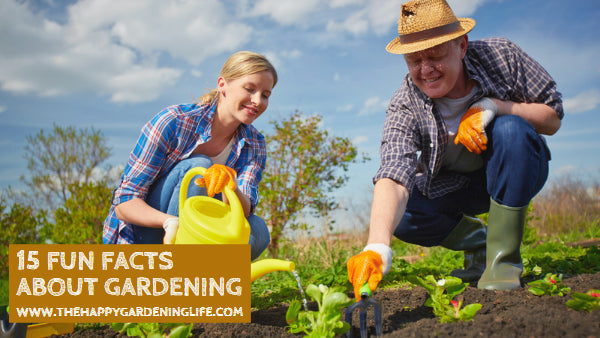
15 Fun Facts About Gardening
Share
Time for some garden fun! Check out these 15 awesome fun facts about gardening and share them online with your friends!
 1. Tomato juice is the official state beverage of Ohio, honoring the part A. W. Livingston of Reynoldsburg, Ohio, played in popularizing the tomato in the late 1800s.
1. Tomato juice is the official state beverage of Ohio, honoring the part A. W. Livingston of Reynoldsburg, Ohio, played in popularizing the tomato in the late 1800s.
2. Archaeologists have uncovered evidence that grapes were grown to make wine about 8,000 years ago in Mesopotamia (today’s Iraq), although the ancient Egyptians were the first to record the process of making wine about 5,000 years ago.
3. The word pineapple comes from European explorers who thought the fruit combined the look of a pinecone with flesh like that of an apple. Pineapples are the only edible members of the bromeliad family.
4. From a botanical standpoint, avocados and pumpkins are fruits, not vegetables, because they bear the plants’ seeds. Rhubarb, on the other hand, is a vegetable.
5. Small pockets of air inside cranberries cause them to bounce and float in water.
6. The first potatoes were cultivated in Peru about 7,000 years ago.
 7. Peaches, pears, apricots, quinces, strawberries, and apples are members of the rose family. So are ornamental species such as spirea, mountain ash, goatsbeard, and ninebark.
7. Peaches, pears, apricots, quinces, strawberries, and apples are members of the rose family. So are ornamental species such as spirea, mountain ash, goatsbeard, and ninebark.
8. The difference between nectarines and peaches is that nectarines don’t have fuzzy skins. You can graft peach branches onto a nectarine tree or nectarine branches onto a peach tree so you have both types of fruits.
9. The average strawberry has 200 seeds. It’s the only fruit that bears its seeds on the outside.
10. Garlic mustard is a member of the mustard family, not garlic. This invasive herb outcompetes native plants in the Eastern and Midwestern United States, posing a threat to other native plants and the species that depend on them.
11. Peanuts are not nuts, but legumes related to beans and lentils. They have more protein, niacin, folate, and phytosterols than any nut, according to the National Peanut Board.
12. A tablespoon of soil has more living organisms than there are people on Earth right now.
13. You can’t see them with the naked eye, but billions of bacteria live in each square yard of dirt. Many help keep the soil healthy and balanced by regulating pH or degrading organic matter.
14. Did you know, carrots actually come in a range of colours? White and yellow carrots come from Europe, and purple ones come from the Middle East. The orange ones are a fairly recent invention, created by crossing various other colours.
15. Lots of plants are used as dyes. You can colour cloth with stewed onion skin, tea bags or walnut juice – try it. One of the oldest blue dyes comes from a plant called ‘woad’ that has been used since Neolithic times – more than 6,000 years ago.
Article Source: Better Homes & Gardens, HGTV Gardens, Royal Horticultural Society
